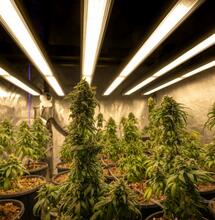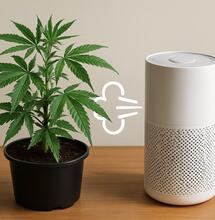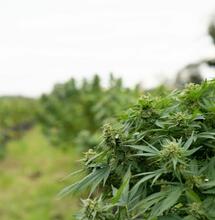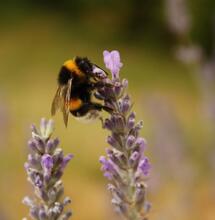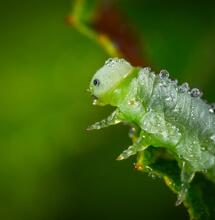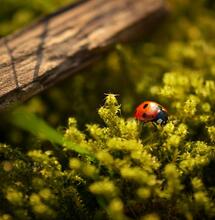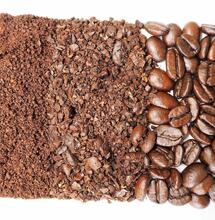The Worst and The Best Companion Plants for Cannabis
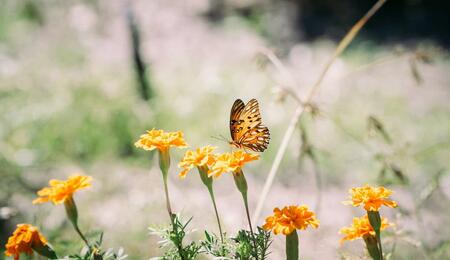
One of the most common reasons why growers may introduce companion plants in their outdoor gardens is to repel pests and attract beneficial friendly bugs around their cannabis flowers. Some companion plants are cover crops that work the soil and unlock more Nitrogen in it. Indirectly, most of these plants will additionally help cannabis to boost its terpene synthesis. In this article, learn more about companion plants for cannabis gardens, which ones to use and which to avoid as you cultivate your home medicine.
Companion planting can have multiple benefits for your garden. A famous example is growing onions next to carrots: the strong smell of onion terpenes can successfully deter winged insects that come for the carrots, and vice versa, terpenes from carrots are capable of keeping onion-loving critters at bay. Win-win situation for both vegetables.
Companion planting is gaining traction among cannabis growers. More and more homegrowers consider it as an easy, organic and natural way to control pests populations in the garden and lure beneficial pollinators and predators, therefore creating an overall healthy environment for cannabis crops to thrive outdoors. But make no mistake when you introduce a new plant or herb in the backyard. Some species are invasive or can cause damage even when they come with certain benefits. Let’s see which are the worst and the best companion plants you can have next to your cannabis girls.
What Plants to Avoid Planting Next to Cannabis?
What works well in one garden, can be a bad idea in another. The worst type of plants to introduce in outdoor cannabis gardens are those that spread too fast and deplete the soil from nutrients. Then there are those that might attract aphids, spider mites and other pests. A third group may release toxins that contaminate its surroundings.
1. Plants that spread aggressively and compete for resources
Examples include brassicas such as broccoli and cabbage, which empty the soil of nutrients. Cover crops, like certain clovers or grasses, can grow without control and affect root systems, which may result in stunted growth in cannabis. Fennel emits a strong scent that can alter the flavor of nearby plants. Mint, which is often utilized by some growers to mask the pungent aroma of cannabis, can also be a bad choice. It can be invasive and it’s not recommended to plant it too close to cannabis.
2. Plants that attract pests
Grapevines, tomatoes, cabbages and cucumbers are well-known for their ability to invite various mites and critters in the garden. Aphids, worms and spider mites equally love these vegetables as they love cannabis. The same is true for roses. It’s best to keep two separate gardens if you want to cultivate roses and cannabis at the same time.
3. Plants that might unleash toxins
Some plants have so-called ‘allelopathic properties,’ which means they can produce undesirable chemicals that might undermine the survival of other plants near them. Bearberries, elderberries, rhododendron, and some types of fern are known to have allelopathic characteristics. Among trees, black walnut produces a toxic compound known as juglone through the leaves. Therefore, it is not smart to keep any cannabis crops in the close vicinity of allelopathic plants.
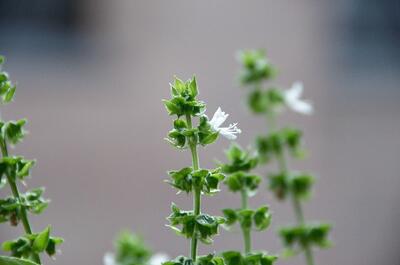
Which Are the Best Companion Plants to Keep in Outdoors Cannabis Gardens?
Look for plants and herbs that can improve soil nutrients and texture, or that are successful at deterring undesirable winged visitors, worms and bugs.
1. Plants that can improve soil in the garden
These are plants that act as Nitrogen-fixers. They can convert atmospheric Nitrogen into Nitrogen-rich fertilizer and can be planted in an area around the garden where you intend to seed cannabis in the future. For example, legumes, such as beans, peas and lentils, are highly-valued for their soil-improving qualities. Red clover, which grows in early spring, can be directly introduced as a cover crop around the base of pale-looking cannabis plants. This nitrogen-fixing companion can improve the health of outdoor cannabis plants, enhancing their green color.
2. Cover crops that regulate water and moisture
Cover crop companion plants can have multiple functions in outdoor cannabis gardens. These species form little green carpets that can contain moisture or lure helpful insects and pollinators, thus they are suitable to be around cannabis. Alfalfa, a legume that shows up during the spring, is characterized by a fine root system that can help draw water and Nitrogen into the zone of cannabis roots. If allowed to form a carpet around the base of cannabis plants, it can be particularly helpful during periods of heatwave and drought. White clover, which can be used as mulch around cannabis plants, can also seal in moisture and increase Nitrogen levels in the soil. Layers of white clover can also resist pests, but let’s see more powerful pest deterrents in the next category.
3. Plants that actively deter pests from the garden
Many insects cannot tolerate the pungent smell released by certain flowers. Lavender, to which only bees are attracted to, and all other nasty critters want to stay away from it, is an excellent example here. Seasoned cannabis growers will be aware of a number of benefits provided by lavender, including the shared terpene linalool that is found in both plants. Some users even mix dried cannabis and lavender flower to get a smoother and more aromatic herbal smoke. Even when its primary goal is not to serve as a companion plant, a bush of lavender near your cannabis is never a bad idea.
Basil, which has a strong sweet aroma, is another formidable pest deterrent. It grows in the spring and summer, and can be added between cannabis plants to help deter aphids and beetles. Bonus, it can be used as an edible. The distinctive scent of coriander can also repel aphids, spider mites and certain beetles, while attracting beneficial insects such as wasps. Dill can repel spider mites and caterpillars, while lemon balm and marigold can help fight aphids.
4. Plants that attract beneficial bugs
If you want ladybugs and aphid lions in the garden, two insects that prey on greenflies and whiteflies during the summer, introduce some yarrow. This plant blossoms in late spring and early summer, and the closer it is to your cannabis plants, the better its effect will be. Chamomile is another excellent companion plant that attracts friendly insects with its nice aroma. In the spring-summer period it can be planted between plants or nearby to invite other predator bugs that will protect your cannabis. Parsley can entice certain wasps that feed on worms, moths and flies.
What Plants Can You Put Indoors?
Most indoor grow spaces should already have a well-controlled bugs-free environment, therefore it is less common for cannabis growers to add companion plants there. However, if needed, several companion plants may benefit your indoor grow room, including basil, chamomile, lavender and marigolds - all of these flowers can repel insects thanks to their superior aromatic qualities.
Does Companion Planting Help with Terpenes?
Companion plants will indirectly help boost terpenoid content in cannabis by creating a more favorable and safe grow environment, thus ensuring plants stay healthy. Alfalfa can boost nutrient availability, aiding the growth of cannabis and potentially bolstering terpene production. Legumes like beans can fix Nitrogen issues in the soil, making it available to cannabis and again facilitating healthy growth and terpenes formation.

List of Beneficial Companion Plants:
Alfalfa: improves soil texture and unlocks nutrients
Basil: deters pests and promotes terpene growth
Beans (and other legumes): boost Nitrogen availability in the soil
Chamomile: deters pests and strengthens essential oils production
Lavender: deters pests, attracts beneficial bugs
Marigold: deters worms, attracts beneficial bugs
Can You Plant Cannabis in a Vegetable Garden?
Cannabis can be grown next to vegetables, however, it is important to be mindful about the location and not plant too close to those vegetables that might be magnets for bugs, or which exhaust the soil nutrients. Choose a location that gets plenty of air circulation to reduce the chances of mildew; the foliage of the plant should be well-trimmed so that all areas of the plant get access to fresh air. Cannabis may also require fertilizers which are not needed for your vegetables; exposing the vegetables to certain cannabis feeds may alter their taste and flavor, so it is good to be cautious about that as well.
Every garden has different opportunities enabled by the available space, the places with fresh breeze or direct exposure to sunlight; it is important to properly use the environment as each spot can have its own function. Create a balanced eco-system between the different herbs, vegetables or crops you are growing in it, and don’t forget to enjoy the process!
More related reads from Soft Secrets:

